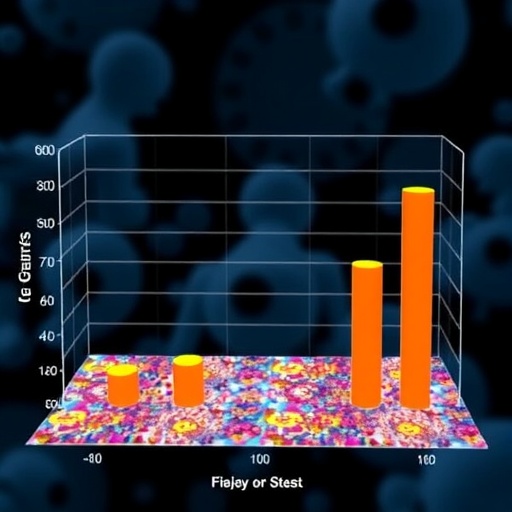In a groundbreaking study published in JAMA Network Open, researchers have uncovered deep-seated racial and ethnic disparities in the treatment of a severe type of heart attack known as ST-elevation myocardial infarction (STEMI). Despite advancements in cardiovascular medicine that have significantly reduced mortality rates from acute myocardial infarction over the past two decades, this new research highlights that Hispanic and non-Hispanic Black patients in Florida are systematically less likely to receive the gold-standard treatment—percutaneous coronary intervention (PCI)—compared to their non-Hispanic white counterparts.
STEMI represents a critical cardiovascular emergency characterized by a complete blockage in one of the heart’s major coronary arteries. Prompt restoration of blood flow is imperative, as delays can lead to irreversible myocardial damage and heightened mortality. PCI, a minimally invasive catheter-based procedure to reopen blocked arteries, is the preferred intervention that can reduce mortality by roughly 30%. National clinical guidelines recommend PCI within 90 minutes of hospital arrival when performed at PCI-capable facilities, or within 120 minutes if patients require transfer from hospitals that lack this capability.
The study, led by Charleen Hsuan, associate professor at Penn State’s Department of Health Policy and Administration, meticulously examined the emergency care pathways of 139,629 STEMI patients in Florida over a decade spanning 2011-2021. The team dissected key junctures in the treatment process, evaluating whether patients initially presented to PCI-capable hospitals, received PCI there, were transferred if necessary, and subsequently received PCI at transfer hospitals. Their analysis revealed stark disparities at every stage, disproportionately disadvantaging Black and Hispanic patients.
One of the most striking findings was the differential likelihood of initial hospital presentation. Approximately 82.6% of non-Hispanic white patients arrived at PCI-capable hospitals, in sharp contrast to significantly lower proportions among Black and Hispanic patients. This initial barrier undeniably shapes downstream access to timely PCI. Among Black patients who did arrive at PCI-capable hospitals, they were still 10.7% less likely to undergo PCI than white patients. For Black patients presenting at non-PCI facilities, the chances of being transferred to PCI centers were 5.3% lower, and even when transferred, they were 20.3% less likely to receive PCI at the new hospital.
Hispanic patients also faced disparities, though these varied across the care continuum. They were 3.8% less likely than white patients to reach PCI-capable hospitals initially, and 5.6% less likely to be transferred from non-PCI capable hospitals. Although not as consistent across all steps as the disparities seen for Black patients, these differences are nonetheless substantial, cumulatively contributing to worse clinical outcomes.
These findings resonate with prior epidemiological data that document higher STEMI mortality rates among minority populations. The added detail here lies in the granularity of the data which pinpoints where in the emergency care process inequities emerge—be it in initial hospital choice, transfer decisions, or PCI administration itself. Unraveling these choke points is essential for policymakers, health administrators, and clinicians striving to close the racial and ethnic gap in emergency cardiovascular care quality.
Hsuan emphasized that the study is foundational in moving beyond broad assertions of disparity towards actionable insights. “By focusing on a single, time-sensitive condition with well-established treatment guidelines, we can highlight specific shortcomings and direct quality improvement efforts where they matter most,” she said. This clarity enables targeted interventions, such as enhancing EMS routing protocols to prioritize PCI-capable facilities or instituting standardized transfer agreements that minimize delays and ensure equitable access to PCI.
It remains unclear what precisely drives these disparities, though insurance coverage differences, geographic distribution of hospitals, and systemic bias within healthcare structures may all play a role. Florida, as the third most populous state in the U.S., provides a crucial lens due to its demographic diversity and wide healthcare infrastructure variation. The researchers caution that their conclusions may not be universally generalizable but strongly suggest that similar patterns could exist nationwide.
The implications extend far beyond the STEMI population. Disparities revealed in this high-stakes emergency condition likely mirror broader inequities permeating other aspects of healthcare delivery. This study, therefore, underscores the urgent need for systemic reforms that ensure standardized, guideline-concordant care irrespective of race or ethnicity.
Collaboration among multidisciplinary teams was instrumental in this study’s success. Alongside Penn State researchers, the team included experts from esteemed institutions such as Stanford University, the University of California San Francisco, Mount Sinai Health System, and the Icahn School of Medicine. This collective expertise spanned emergency medicine, health policy, data analytics, and health services research, enabling robust analysis of complex healthcare datasets.
Financial support was provided by the National Institute on Minority Health and Health Disparities, National Center for Advancing Translational Sciences, and other federal and academic institutions, highlighting the importance of sustained funding to elucidate and address health inequities. The researchers hope their work galvanizes a data-driven approach to public health that prioritizes equitable access and quality of care.
Ultimately, this research paints a troubling portrait of the U.S. healthcare system’s failure to deliver equitable life-saving interventions to all STEMI patients. As cardiovascular diseases remain a leading cause of death nationwide, ensuring that emergent care is both rapid and equitable could transform survival outcomes for millions. With this landmark study illuminating specific intervention points, the path forward lies in translating these empirical insights into systemic change that eradicates disparities and saves lives.
Subject of Research: People
Article Title: Disparities by Race and Ethnicity in Percutaneous Coronary Intervention
News Publication Date: 18-Sep-2025
Web References:
Study in JAMA Network Open
CDC Heart Disease Deaths
Previous research on PCI mortality reductions
Clinical guidelines for PCI timing
Higher mortality in minority STEMI patients
References: Provided in web references above
Keywords: Cardiovascular disorders, Cardiac arrest, Cardiovascular disease, Public health, Myocardial infarction, Acute myocardial infarction, Emergency medicine, Health care delivery
Tags: cardiovascular emergency responseclinical guidelines for heart attackshealthcare inequalities in Floridaheart attack treatment disparitiesHispanic patient healthcare accessJAMA Network Open research findingsmortality rates in heart attack patientsnon-Hispanic Black patient carepercutaneous coronary intervention accessracial and ethnic disparities in healthcareSTEMI patient caretimely treatment for myocardial infarction





